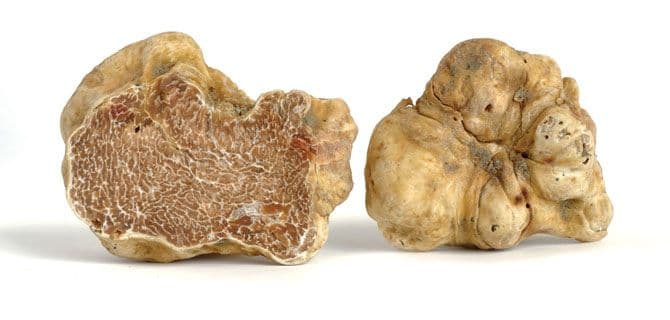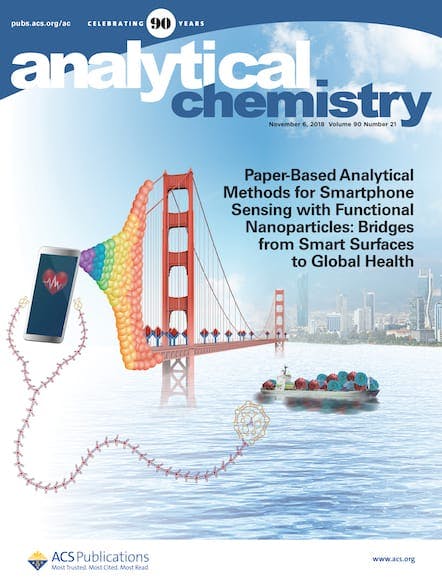In 2012, a routine check by authorities of a Bologna, Italy, restaurant led to the seizure of more than 300 kg of contraband. If the counterfeit material had been what it purported to be—white truffle puree—today it would sell for over $1 million. A new method offers a way to detect such fungus fraud...

In 2012, a routine check by authorities of a Bologna, Italy, restaurant led to the seizure of more than 300 kg of contraband. If the counterfeit material had been what it purported to be—white truffle puree—today it would sell for over $1 million. A new method offers a way to detect such fungus fraud—distinguishing the aroma of real Alba white truffles, Tuber magnatum Pico, from synthetic truffle aroma in food.
Growing under certain Italian trees and harvested only a few months per year, Alba white truffles are among the priciest of delicacies, fetching almost $7,000 per kg last season. The key to their flavor and aroma is bis(methylthio)methane, an aromatic compound that can be synthesized and added to foods to deliver truffle taste. “You may fool some people with cheap truffles, but spiking them with artificial aroma will make it easier to get away with false labeling,” says Simon Cotton of the University of Birmingham, who was not involved with the new work. Consumer desire for genuine products drives a need for analytical tests to prevent such food fraud, according to Luigi Mondello of the University of Messina and colleagues in their new study.
When isolated from a natural white truffle, bis(methylthio)methane contains carbon-12 and carbon-13 in a ratio unique to the environment in which the fungus grew. Meanwhile, the synthetic version of this molecule contains a carbon isotopic signature unique to its origins in petrochemical or plant-based feedstocks.
Mondello and colleagues used this difference to test bis(methylthio)methane from natural truffles, several synthetic samples, and various truffle-flavored foods. They collected white truffles from around Italy, chopped them up, and sealed them in vials containing fibers to adsorb volatile compounds evaporating from the truffles. Then the researchers extracted the adsorbed compounds and used a gas chromatograph to isolate bis(methylthio)methane. They injected the purified compound into an isotope ratio mass spectrometer, which measures the relative amounts of 12C and 13C in samples by weighing carbon dioxide released when the molecules are burned inside the instrument.
The researchers repeated this process to measure the relative 13C abundance in bis(methylthio)methane synthesized from petrochemicals. Natural white truffles had a higher proportion of 13C than petrochemically derived flavor—a large enough difference to distinguish between the two origins in a sample.
Next, the researchers repeated the experiments on samples of commercial truffle-flavored olive oil, honey, pasta, fresh cheese, sauce, and cream purchased from Italian stores. Products labeled as containing lower quality truffles or added truffle aroma had the isotopic signature of artificial bis(methylthio)methane, whereas products labeled as containing white truffle had the isotopic signature of the natural fungus. Thus, the researchers detected no fraud but verified that the technique successfully distinguished real from synthetic truffle flavor.
Using their instrument design, this analysis is ready to go into other labs, says coauthor Danilo Sciarrone of the University of Messina.
Tom Brenna of the University of Texas, Austin, says, “The data show that 13C/12C isotope ratios of key flavor molecules in truffles may be a good test for authentication and warrant a wider survey of truffles in other regions.”
This article is reproduced with permission from C&EN (© American Chemical Society). The article was first published on June 1, 2018.
